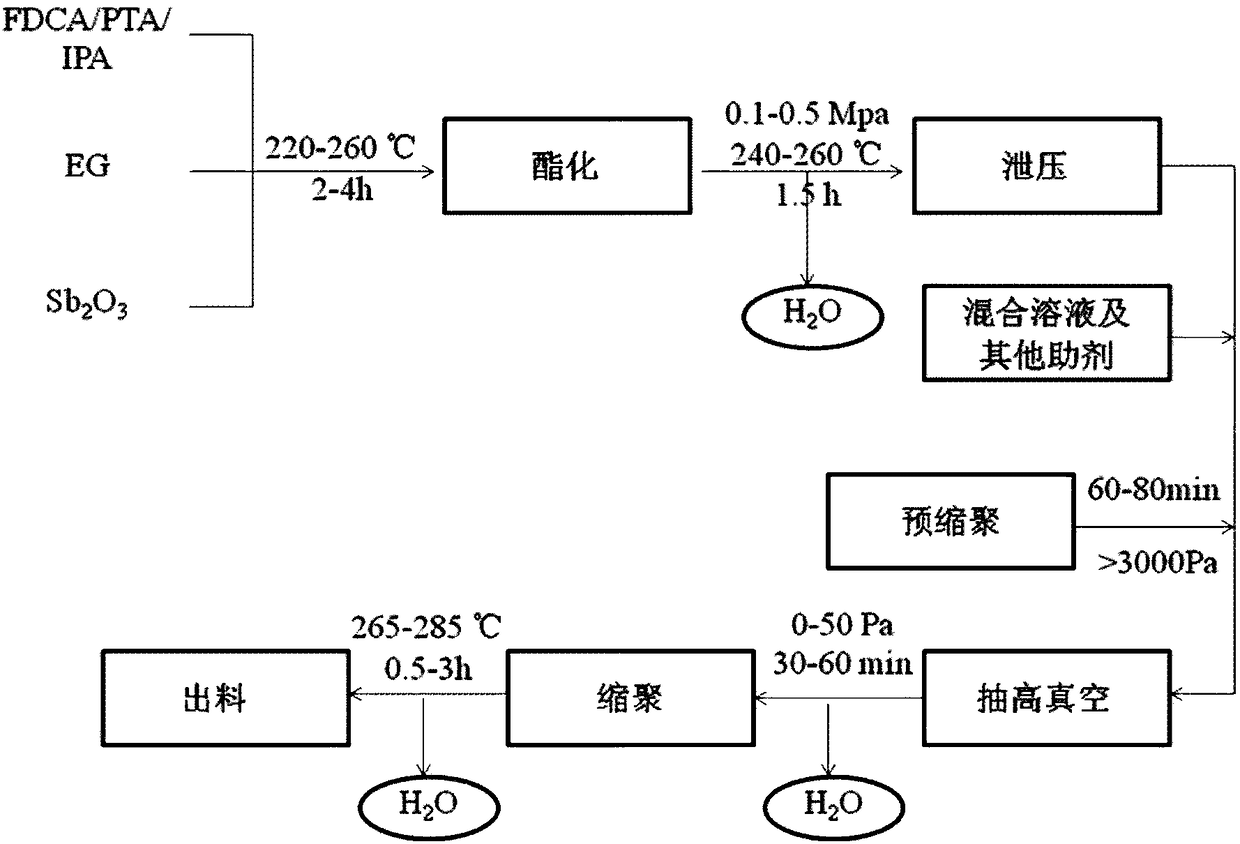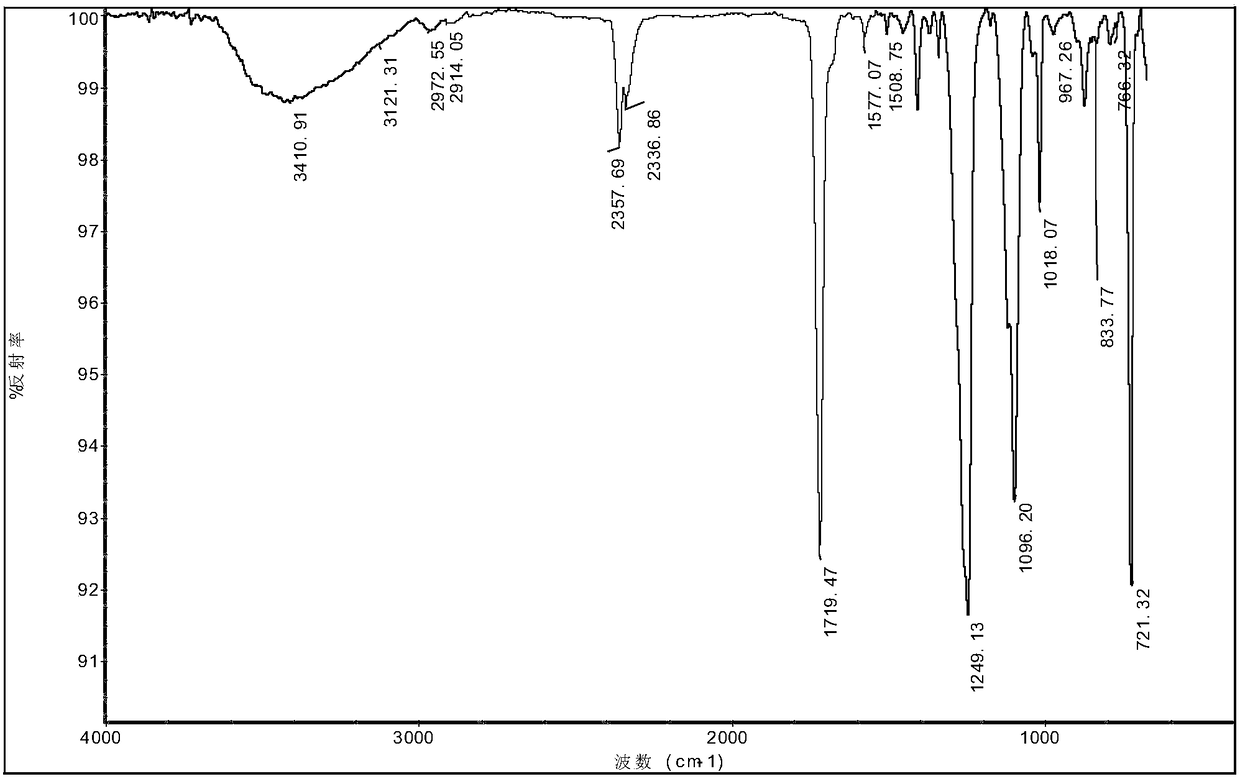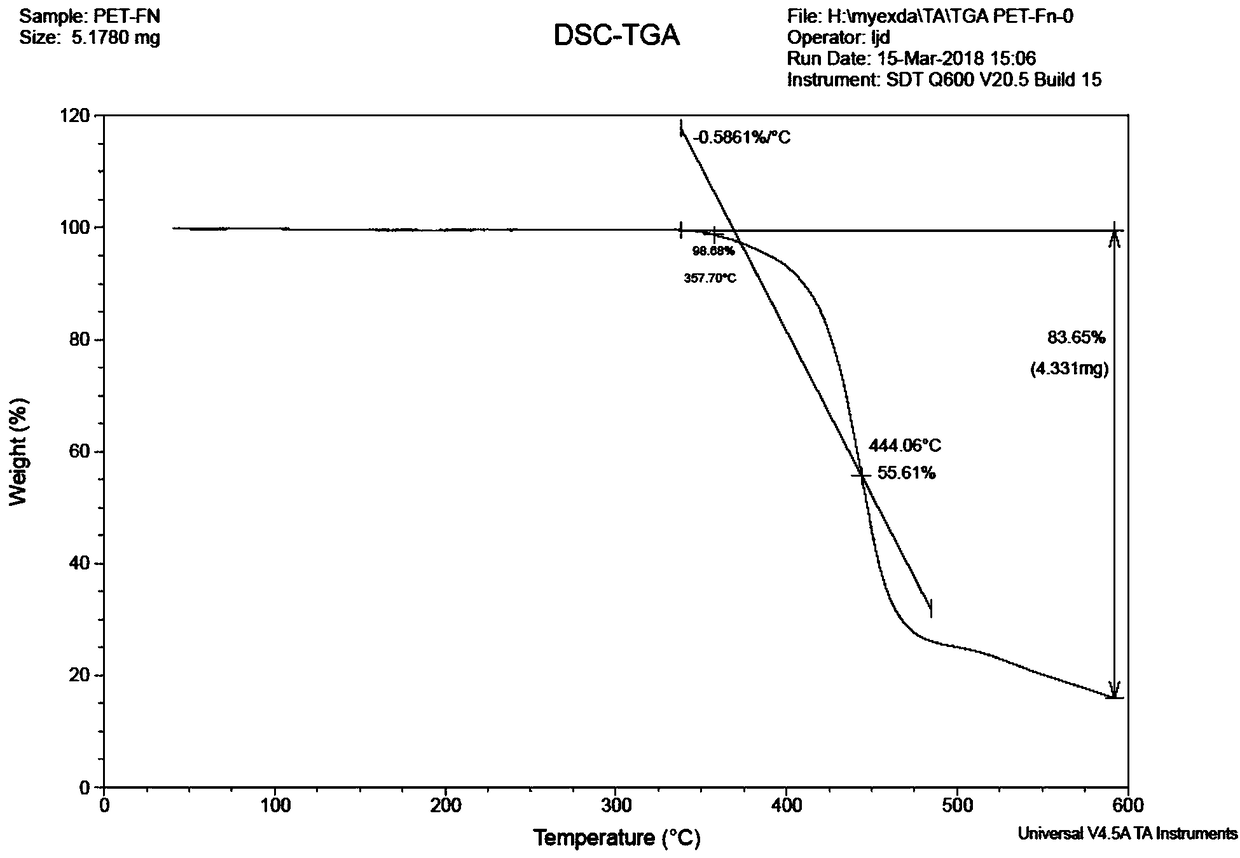Biology-based electrostatic dissipation polyester and preparation method thereof
A static-dissipative, bio-based technology, applied in the field of high-molecular-type bio-based polyester functional materials, to achieve huge economic and ecological value
- Summary
- Abstract
- Description
- Claims
- Application Information
AI Technical Summary
Problems solved by technology
Method used
Image
Examples
preparation example Construction
[0081] The preparation flow chart of bio-based electrostatic dissipative polyester of the present invention is as follows figure 1 As shown, the specific content is as follows:
[0082] (1) Esterification process stage:
[0083] The present invention introduces 2,5-furandicarboxylic acid (FDCA) in the esterification process section to react with ethylene glycol (EG) for esterification. There are two reasons:
[0084] First, FDCA is rich in sources and can be prepared from agricultural wastes such as corn stalks through a series of catalytic cracking, which has the characteristics of biomass;
[0085] The second is that the aromaticity and structural symmetry of FDCA are weaker than that of the benzene ring, and the presence of an oxygen atom containing a lone pair of electrons in the furan ring increases the polarity of FDCA.
[0086] Therefore, by replacing FDCA, bio-based polyester materials can be prepared; in addition, FDCA will increase the polyether composition and che...
Embodiment 1
[0112] (1) In a 6L stainless steel autoclave, add 1500g of 2,5-furandicarboxylic acid (FDCA), 840g of ethylene glycol (EG), 0.6g of antimony trioxide, and replace the air in the autoclave with nitrogen. ℃-250℃, 0.3-0.4MPa for esterification reaction, when no more water evaporates, release the pressure to normal pressure.
[0113] (2) 300g PEG 6000, 0.1g cobalt acetate, 0.28g phosphoric acid, 0.4g triphenyl phosphite, 75g bishydroxyethyl isophthalate-5-sodium sulfonate (SIPE) and 500g ethylene glycol ( EG) mix, stir evenly, add to the reaction kettle, raise the temperature to 270°C, gradually reduce the absolute pressure in the kettle to below 50Pa, the reaction time is 2-3 hours, until the viscosity of the system does not increase.
[0114] (3) After the reaction is completed, feed nitrogen gas to press out the melt, pelletize and dry to obtain bio-based electrostatic dissipative ethylene furandicarboxylate slices.
[0115] Effect test: The viscosity of the obtained finished ...
Embodiment 2
[0117] (1) In a 6L stainless steel autoclave, add 750g 2,5-furandicarboxylic acid (FDCA), 750g terephthalic acid (PTA), 840g ethylene glycol (EG), 0.6g antimony trioxide, and feed After replacing the air in the kettle with nitrogen, carry out the esterification reaction at 240°C-250°C and 0.3-0.4MPa. When no more water evaporates, release the pressure to normal pressure.
[0118] (2) Mix 0.1g of cobalt acetate, 0.28g of phosphoric acid, 0.4g of triphenyl phosphite with 500g of ethylene glycol (EG), stir well, add to the reaction kettle, raise the temperature to 270°C, and gradually The absolute pressure drops below 50Pa, and the reaction time is 2-3 hours until the viscosity of the system no longer rises.
[0119] (3) After the reaction is completed, feed nitrogen gas to press out the melt, pelletize and dry to obtain bio-based electrostatic dissipative ethylene furandicarboxylate slices.
[0120] Infrared Spectroscopic and Thermal Analytical Detection of Bio-Based Static Dis...
PUM
| Property | Measurement | Unit |
|---|---|---|
| glass transition temperature | aaaaa | aaaaa |
| melting point | aaaaa | aaaaa |
| water absorption | aaaaa | aaaaa |
Abstract
Description
Claims
Application Information
 Login to View More
Login to View More - R&D
- Intellectual Property
- Life Sciences
- Materials
- Tech Scout
- Unparalleled Data Quality
- Higher Quality Content
- 60% Fewer Hallucinations
Browse by: Latest US Patents, China's latest patents, Technical Efficacy Thesaurus, Application Domain, Technology Topic, Popular Technical Reports.
© 2025 PatSnap. All rights reserved.Legal|Privacy policy|Modern Slavery Act Transparency Statement|Sitemap|About US| Contact US: help@patsnap.com



